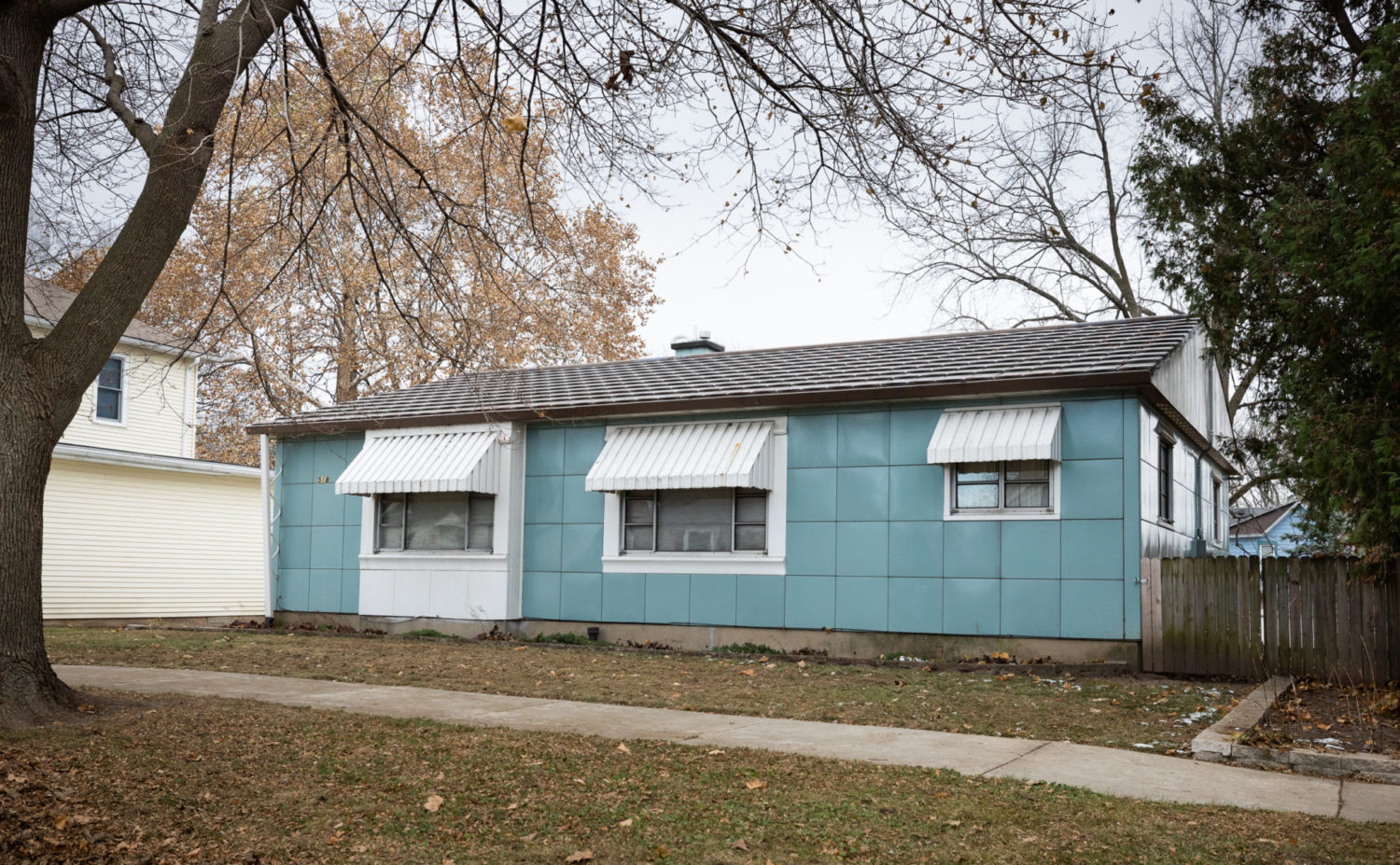By Dirk Fletcher
July 9, 2020
In 1997, my wife and I moved to an apartment into a quiet neighborhood in Brookfield about 15 miles from the Chicago Loop. We had lived in Chicago for two years, and with the help of my wife’s history fanatic uncle, we enjoyed learning about the vibrant city where we would call home and raise our children.
Two doors down from our apartment was a peculiar yellow house that we quickly dubbed “the refrigerator house” due to its shiny, porcelain enameled outer shell. It was a “Lustron”— one of nearly 2,500 prefabricated enameled steel homes built by the Lustron Corporation in the United States following World War II. Contractors in our family, my wife’s uncle included, would comment about the Lustron when they would visit.
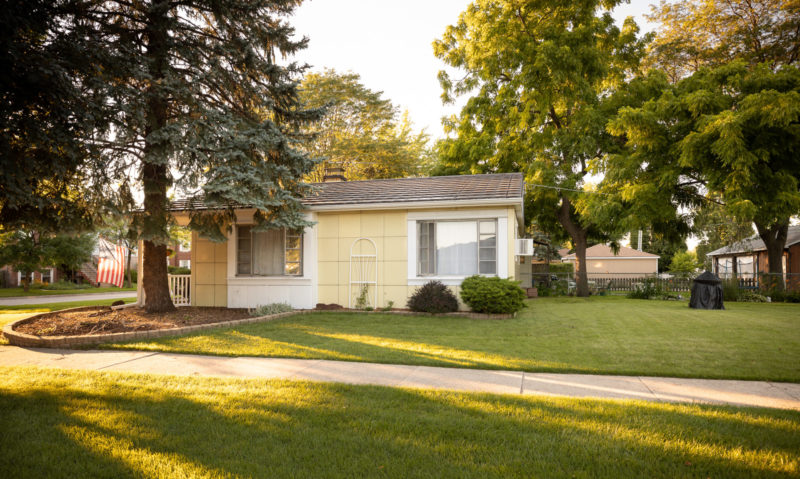
(PICTURED: A Lustron home located at 3943 Arthur Ave. in Brookfield, Illinois. Many Lustrons, like this one in Brookfield, stand on corner lots. “I suspect it is purposeful, albeit a subtle show of strength,” Fletcher said. Credit: Dirk Fletcher)
Fast forward to 2018 when my brother was in town and wanted to see a Lustron house that he had heard about on a podcast. Sadly, by this point, our “refrigerator house” had been demolished. However, 12 Lustron homes remained in Brookfield, and I soon began to photograph them. This sparked what has become a larger Lustron photography project aimed at documenting 375 still-intact Lustron homes across the United States — roughly 25% of the estimated 1,500 enameled relics that remain today. A number of these remaining Lustron homes are listed on the National Register of Historic Places.
LUSTRONS IN ILLINOIS AND BEYOND
This month marks my two-year anniversary of starting this photography project, which has taken me outside my own Norman Rockwell-ish neighborhood, on countless blue highways, backroads and major thoroughfares to track down and document these unique homes. To date, I have photographed 320 Lustron homes across 15 states and Washington, D.C., creating (to the best of my knowledge) the largest collection of cohesive Lustron images.
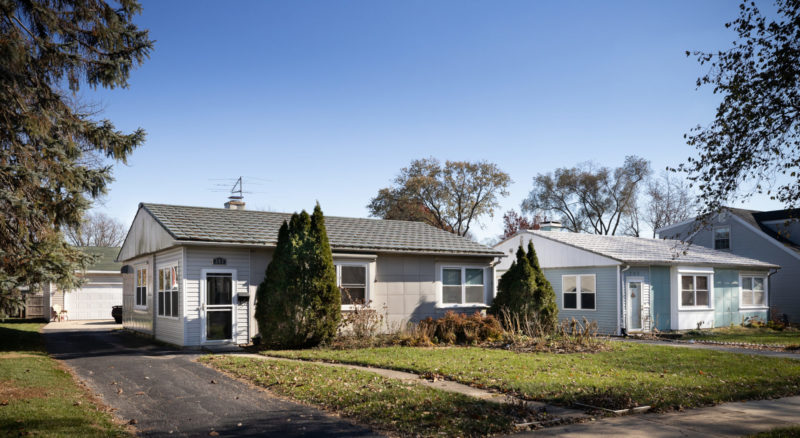
(PICTURED: The homes at 247 and 243 N. Garfield St. in Lombard, Illinois, are two of four Lustrons on the same block. Credit: Dirk Fletcher)
Many Lustron homes remain in Illinois. Lombard, Illinois, in fact has the largest concentration of Lustrons in the country. McHenry has two historic Lustrons, including the home at 2423 Mogra Drive, which is the last known Lustron home to have been produced. Interestingly, just around the corner, at 4314 S. South Street in McHenry, is where the oldest-known Lustron home is located. This home was originally located in Chicago near Lake Shore Drive and Lawrence Avenue but moved to McHenry when Chicago building codes required plaster walls and ceilings in homes.
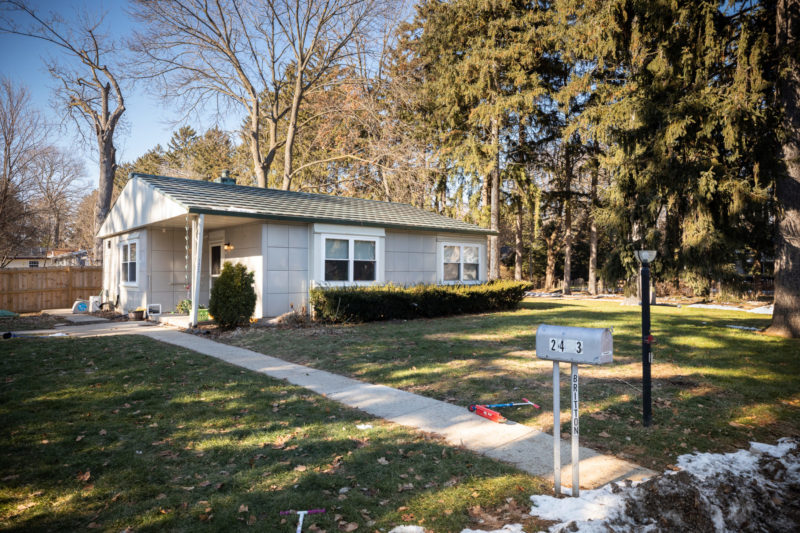
(PICTURED: The last known produced Lustron home located at 2423 Mogra Drive in McHenry, Illinois. Credit: Dirk Fletcher)
A SHORT LUSTRON HISTORY, HAMBURGERS & GASOLINE
The Lustron Corporation was created by Chicago industrialist and inventor Carl Strandlund. Born in Sweden and raised in Moline, Illinois, Strandlund was serving as an executive in the early 1940s at Chicago Vitreous Enamel Product Company, which was revolutionizing hamburger stands and filling stations by using interlocking steel panels with a durable and low-maintenance hardened porcelain enamel outer coating.
By the end of the decade, a housing shortage loomed large in the United States due to the many GIs returning from the war. In response, Strandlund pivoted Chicago Vit’s production and use of enameled steel panels to create affordable and low maintenance homes. He launched Lustron Corporation as a division of Chicago Vit and enlisted the help of architects Morris Beckman and Roy Blass for the housing design. With government funding aid and a post-war unlocked supply of steel, Lustron Corporation began rolling out prefabricated homes from its Columbus, Ohio, factory. Each home was delivered in a customized truck that carried over 3,000 parts needed to build a single home.
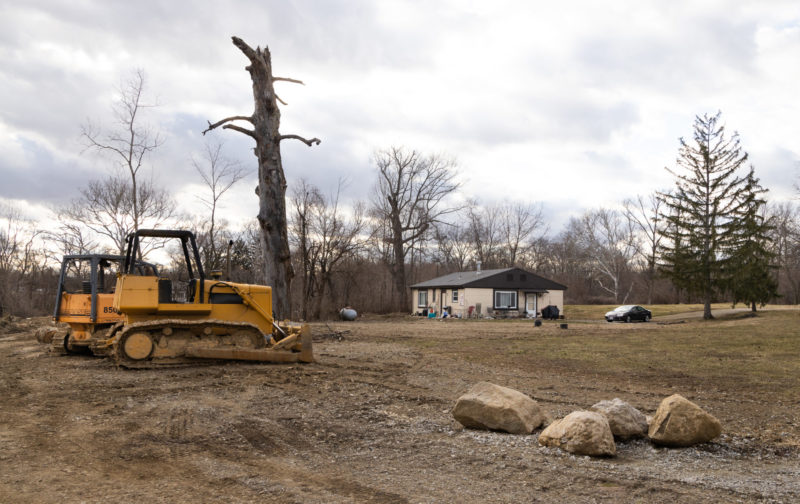
(PICTURED: Carl Strandlund’s personal Lustron located at 3800 Westerville Road in Columbus, Ohio, “in the middle of a field of change,” Fletcher said. “A steadfast pillar in a changing world, I can only hope Strandlund would appreciate this image.” Credit: Dirk Fletcher)
A REFLECTION OF OUR PAST
In the three short years between 1947 and 1950 when Lustron entered into bankruptcy, approximately 2,500 homes costing between $8,500 and $10,500 were created. In my travels photographing more than 300 of these houses thus far, I have received an unexpected education in urban development. I had assumed when these homes were built, they were done so on blocks with similarly size and priced houses, and had owners of comparable socioeconomic backgrounds. While a good portion of these homes today are found on blocks that have aged as expected, some fall on either end of the income-spectrum, and those are the ones that fascinate me the most. I’ve photographed some meticulously maintained Lustrons that are located among large modern homes in luxurious, upscale neighborhoods. And I have also photographed homes where the exterior paints a picture of poverty, struggle and desperation. In some instances, both such Lustrons have existed in the same city.
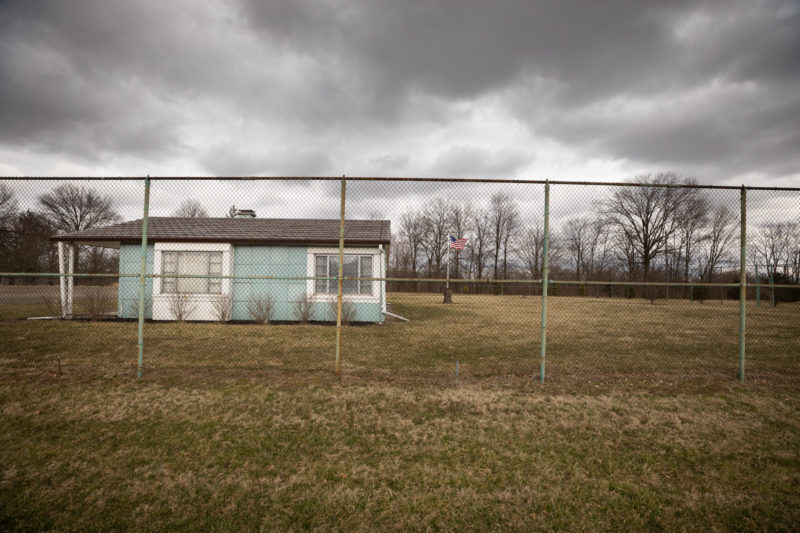
(PICTURED: A Lustron home at 400 N. Hamilton Road in Columbus, Ohio, owned by the Whitehall Historical Society. “This is another image that seems to illustrate the strength and enduring quality of the Lustron, with its flag flying, bracing for bad weather. Something about the surrounding chain link fence adds a layer of complexity and seems to tip its hat to what the company accomplished in only three years,” Fletcher said. Credit: Dirk Fletcher)
Seventy years have passed since these Lustron homes were constructed, and the change that has occurred in the neighborhoods in which they are located is staggering. Yet the presence of a 1,100-square-foot enameled steel Lustron home serves as a reminder of a simpler life in the community seven decades ago. Their glistening porcelain outer shell is a reflection of post-war America. These homes are more than a footnote in affordable housing history, and I’m hoping my efforts to document them will help to preserve the legacy of these unique and historic homes.
(TOP PICTURE: A Lustron home in Belvidere, Illinois. Credit: Dirk Fletcher)
ABOUT THE AUTHOR
Dirk Fletcher is a second-generation photographer shooting digitally and with large format film. He is a technical representative for Canon USA, supporting professional users of still and cinema equipment. His work can be viewed at dirkfletcher.com and on Instagram @dirkfletcher.

